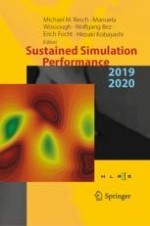This book presents the state of the art in High Performance Computing on modern supercomputer architectures. It addresses trends in hardware and software development in general. The contributions cover a broad range of topics, from performance evaluations in context with power efficiency to Computational Fluid Dynamics and High Performance Data Analytics. In addition, they explore new topics like the use of High Performance Computers in the field of Artificial Intelligence and Machine Learning. All contributions are based on selected papers presented at the 30th Workshop on Sustained Simulation Performance (WSSP) held at the High Performance Computing Center, University of Stuttgart, Germany in October 2019 and on the papers for the planned Workshop on Sustained Simulation Performance in March 2020, which could not take place due to the Covid-19 pandemic.
